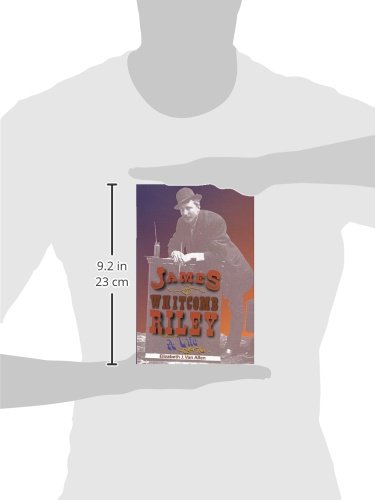Showing James Whitcomb Riley: A Life (Indiana) by Elizabeth J. Van Allen
No recommendations yet View on Amazon (paid link)
At the end of the nineteenth century, when he was at the height of his career, James Whitcomb Riley was the most popular poet in America. Few literary figures have ever become so famous during their lifetimes. He was the author of such American favorites as "Little Orphan Annie," "The Frost is on the Pumpkin," and "The Raggedy Man." His poetry anthologies were major bestsellers, and his public readings were regular sellouts. Respected men of letters such as William Dean Howells and Mark Twain highly regarded Riley's work and believed that he was a poetic genius who expressed the sentiments of the American people. It is not inappropriate to see him as the Charles Dickens of the Midwest. Nevertheless, intellectuals tend to dismiss Riley, although he remains a cultural icon in his home state of Indiana.Historian Elizabeth J. Van Allen investigates both the reasons for the overwhelming popularity of the poet at the turn of the century and his importance as a cultural figure and definer of his times. Van Allen not only sheds new light on Riley's cultural significance but also elucidates many aspects of the poet's life that have been mythologized and exaggerated. When he was alive, the general public was so interested in Riley's life that newspaper and magazine reporters throughout the nation sought him out for interviews. With these reporters, his publishers, and his promoters, Riley created an image of himself that served to broaden his celebrity and sell his poetry.Through this process, he established a public persona that resembled the simple, homespun characters that appear in many of his poems. Over time it has become increasingly easy to confuse Riley the poet with his work. Legends and rumors which have grown up around Riley have either elevated him as a hero who gave Hoosiers a pride of place or denigrated him as a drunken author of Victorian doggerel. Van Allen sifts facts from fiction to construct as true a portrait of Riley as possible in the contest of the so